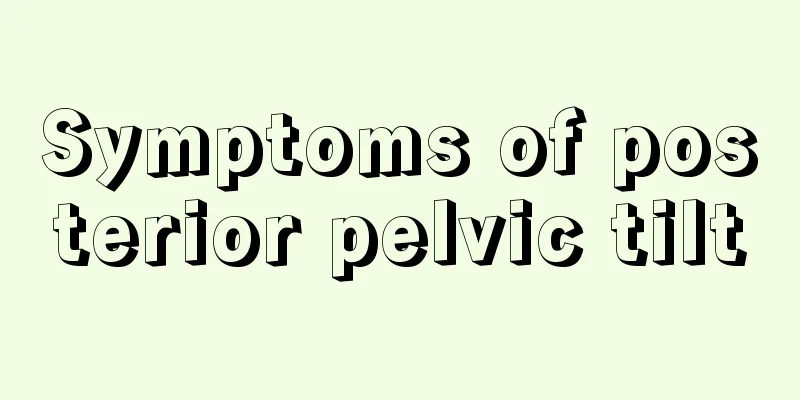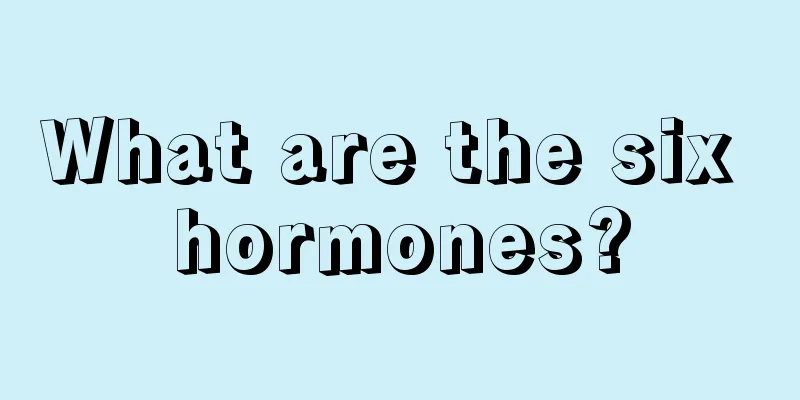Symptoms of posterior pelvic tilt

|
Many people may have heard of pelvic tilt in daily life. Pelvic tilt refers to the position of the pelvis being out of position. This is not a good thing, and not everyone knows the harm of pelvic tilt. So, what are the manifestations of pelvic posterior tilt? What are the harms of pelvic posterior tilt? Let's have a simple understanding of this issue. I hope the following points will be helpful to everyone! Pelvic posterior tilt can be caused by trauma or congenital factors. Patients with posterior pelvic tilt often present with the following symptoms: 1. The buttocks are flat and loose, the center of gravity of the human body tilts backward, and the spine often shifts to balance the body's force line, which can easily cause the patient to have hunchback deformity. 2. Because of the posterior tilt of the pelvis, the working pressure of the intervertebral disc will be too great, resulting in degenerative changes of the intervertebral disc, pain in the waist, soreness and restricted movement. In people with posterior pelvic tilt, the physiological curvature of their intervertebral discs is more vertical than that of normal people. 3. Patients with posterior pelvic tilt may also experience pain in the neck, shoulders and back. This is mainly because pelvic tilt will affect the reliability of spinal cones such as the cervical vertebrae, lumbar vertebrae, and intervertebral discs, leading to changes in the balance of the spine's gravity line, which in turn causes clinical manifestations of the head, neck, and shoulders. What are the harms of posterior pelvic tilt? 1. It causes excessive working pressure on the intervertebral disc and causes lower back pain and soreness. People with a posterior pelvic tilt generally have a more vertical inclination of their intervertebral discs than normal people, which makes the waist support more direct, easily increases the pressure on the lumbar intervertebral discs, and makes the waist muscles more tense. Therefore, low back pain and soreness are obvious manifestations of "pelvic tilt". 2. People with posterior pelvic tilt often suffer from headaches and shoulder and neck pain. In addition, the inclination of the lumbar spine will also be affected, and the area of the upper front lumbar spine close to the intervertebral disc will be straighter. The shoulder blades protrude significantly, which makes shoulder and neck pain more likely to occur. Such people usually have their necks stretched forward a lot, and even have headaches. 3. The buttocks are sagging and the chest is hunched, indicating that the body is weak. People with a posterior pelvic tilt may look listless when walking, because they are prone to foot drop. Posterior pelvic tilt will cause the body to tilt abnormally, resulting in a "hunchback". 4. It is harmful to women’s urinary system. Pelvic deviation, whether "posterior tilt" or "protrusion", affects all normal functions of the human organ system as part of the body. When the intervertebral disc is deformed, it will compress the urinary system and damage the health of the urinary system. In particular, symptoms such as menstrual pain in women are related to pelvic posterior tilt. |
<<: What causes acne on girls' chests?
>>: Reasons for delayed onset of pregnancy at 41 weeks
Recommend
[Fat Bear Science] These abnormalities on the legs may indicate cancer
The early symptoms of cancer in different systems...
What medicine is good for uterine cyst?
Female friends are often threatened and harmed by...
Can pregnant women eat ice cream in winter?
Pregnant women are more prone to getting hot than...
Sad! A man drank alcohol for 20 years, causing his eyes to turn yellow and his liver to fail!
Recently, a man in Henan Province turned yellow a...
Who are the high-risk groups for diabetes?
1. The high-risk group for adult diabetes refers ...
What to do if milk swelling occurs at night
When milk swelling occurs at night, we can apply ...
How to discharge lochia?
Women usually discharge lochia after giving birth...
What are the treatments for vulvar psoriasis?
We have all heard of psoriasis, a skin disease th...
Dopamine neuron regeneration brings new hope for Parkinson's disease treatment
In our brain, in addition to neurons that transmi...
Want to beautify your skin and replenish your blood? Six kinds of soups
For female friends, whether the qi and blood are ...
The H1N1 flu epidemic continues to rise, will it end in March? 20 questions and 20 answers about the H1N1 flu!
Currently, influenza is at its peak. According to...
Why is the chest pain getting bigger?
Some people often feel chest pain, and even their...
Picture of the cervix opening during childbirth
The cervical opening is medically known as the di...
Symptoms of 7 days pregnancy
When a woman is pregnant, it usually takes about ...
What is the yellow watery discharge?
Women's health is very important. We must pay...









